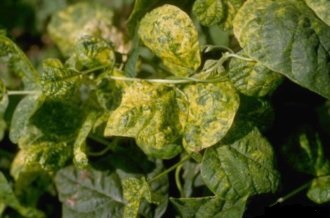

Geminiviruses, named for their twinned icosahedral particles, infect food and fibre crops, ornamental plants and weeds and cause substantial crop losses around the world. The incidence and severity of geminivirus diseases has greatly increased in the past 20 years. In Africa and Asia, where geminivirus disease greatly affects agriculture, maize streak disease, cassava mosaic disease and cotton leaf curl disease have caused complete losses in infected fields . Tomato yellow leaf curl disease is one of the major viral diseases of tomato worldwide
Geminiviruses are classified by the International Committee on Taxonomy of Viruses into seven genera (Begomovirus, Mastrevirus, Curtovirus, Becurtovirus, Eragrovirus, Topocuvirus and Turncurtovirus) on the basis of their genome organization and insect vectors. All geminivirus genomes occur as single-stranded DNA (ssDNA) that is packaged into virions and replicative double-stranded DNA (dsDNA) that is transcribed in the nucleus of infected plant cells.
In PAmiRDB, 336 geminivirus genomes are searched against plant miRNAs in order to find intractions. Source of all viral genome used is NCBI, Entrez Genome. Only complete genomes are taken into consideration.